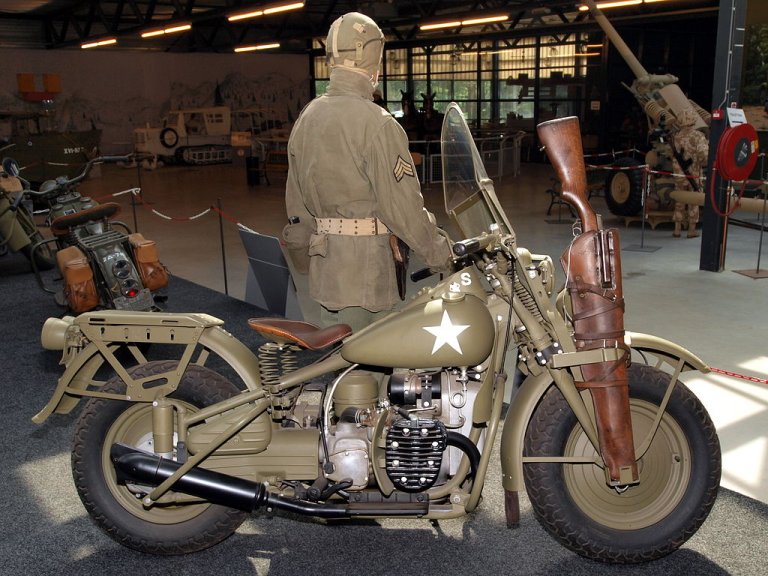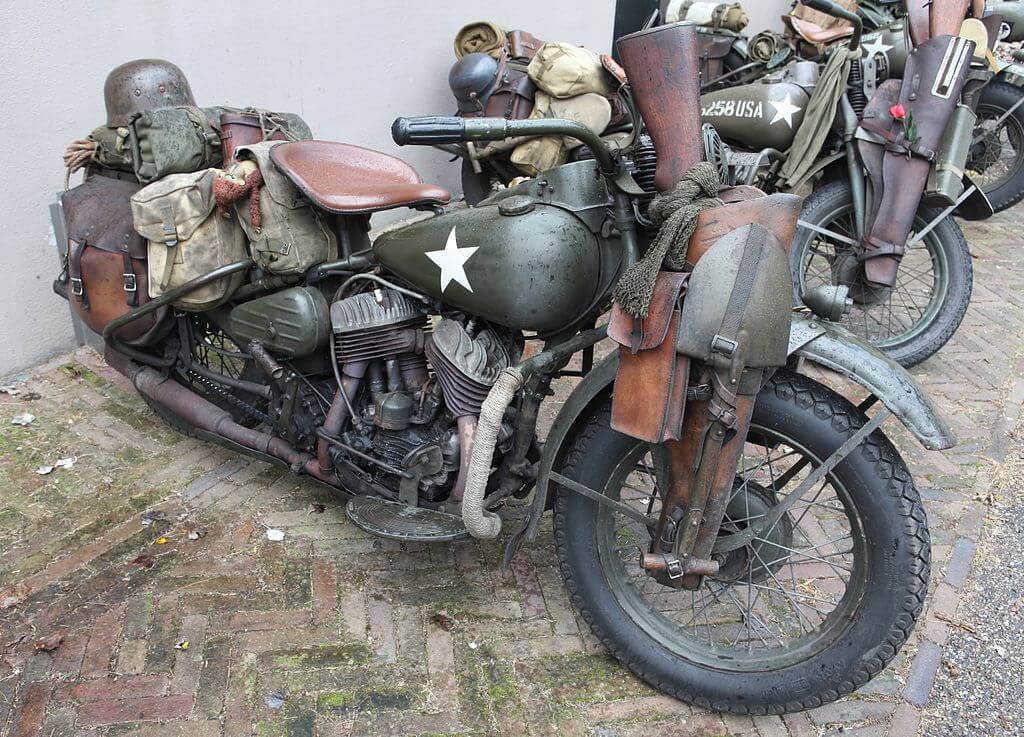Guest Blog
Harley-Davidson Wartime: 5 Prototypes for WWII
Bike Trader, We Buy Any Bike would like to thank Earl Baldwin for sharing this guest post about wartime Harley-Davidson with us!... President Franklin Roosevelt was re-elected to the White House during the 1940 election. Partially on a platform that promised to keep America out of the expanding conflict in Europe that would become WWII. Despite this stance, American rearmament had begun in earnest.
Drawn into the conflict, America needed a strong military to support our Allied powers in Europe. They build our army and navy into robust defensive forces. When it came to supplying a fast, versatile form of transportation. Both for travel during the rearmament phase and after America’s eventual entry into World War II. Harley-Davidson was up to the task.

The American Motorcycle Goes To War
For the war, Harley made simple, no-frills bikes that were easier to navigate through tight spaces. Over uneven terrain than four-wheel military vehicles. The bikes’ base design was a flexible platform for land missions. While the relatively small amount of resources needed to produce the bikes. With the ability to allow production to continue during wartime supply shortages. Harley motorcycles soon became a feature of the American forces throughout the combat theatre.Five Harley-Davidson War Prototypes
Harley bikes for WWII are valuable classics. They have created a Harley-Davidson collector culture around Harley military models. Today, the bikes are primarily displayed for show. If they’re driven, it’s usually for just a short distance. To give Harley fans a glimpse of history in action. Below are five of these bikes. They helped America succeed in the last world war.-
The WLA
-
The TA
-
The WSR

-
The XA
-
The XS
After The War
As U.S. soldiers returned home, many brought a deep respect for Harley-Davidson motorcycles back with them. Motorcycles became a popular ride for weekend adventures and daily commuting in America. Many of these servicemen turned to the very motorcycle brand they had learned to trust. Across the fields of France and the through the dusty heat of the desert. The new, citizen edition Harleys were dependable, powerful, and could be customized with Harley-Davidson upgrades. They could boost performance and aesthetic appeal. Following this, Harley-Davidson soon grew their brand to become an iconic choice for free-spirited travellers that we know and love today! Defined by how far a tank of gas would take them. The rest, as they say, is history. Meet the Author Earl Baldwin is a long-time car enthusiast with a fledgeling collection of classics (‘48 Plymouth, ‘49 Pontiac, ‘55 Chrysler). He has a passion for writing about exotic cars and motorcycles. Along with aftermarket modifications and improving car performance. When petrolhead, Earl isn't writing, you're likely to see him on one of his adventures, cruising in his classic cars, and motorcycles. Click here to see our previous guest blog post!
Helmut
12 Mar 2018
For any blog enquiries, please emailmarketing@webuyanybike.comView all posts by Helmut

